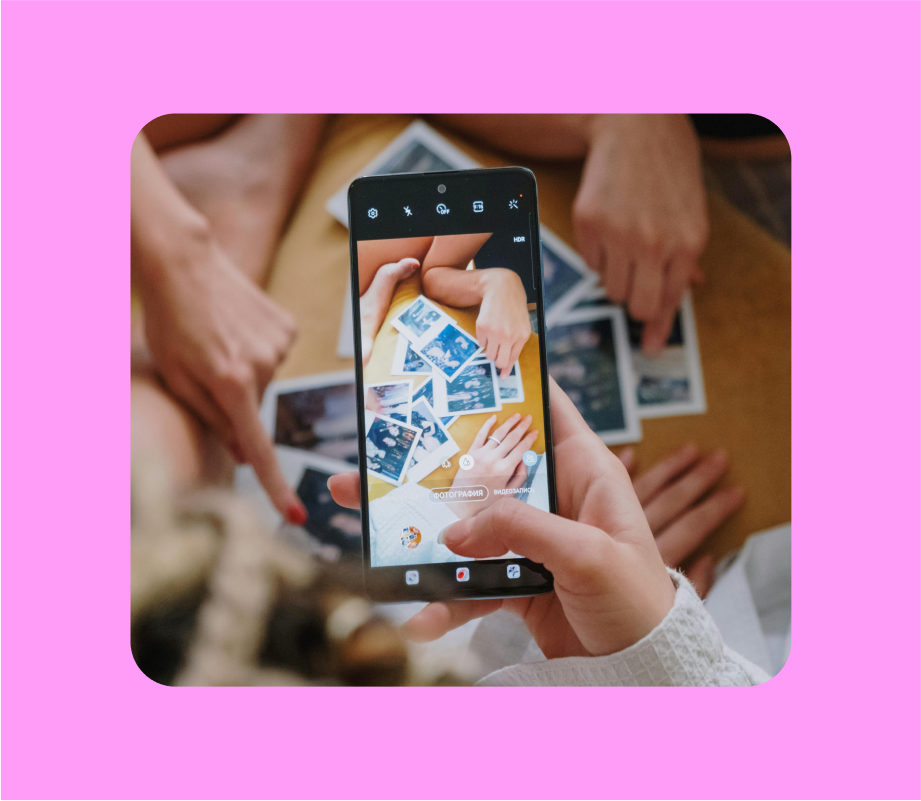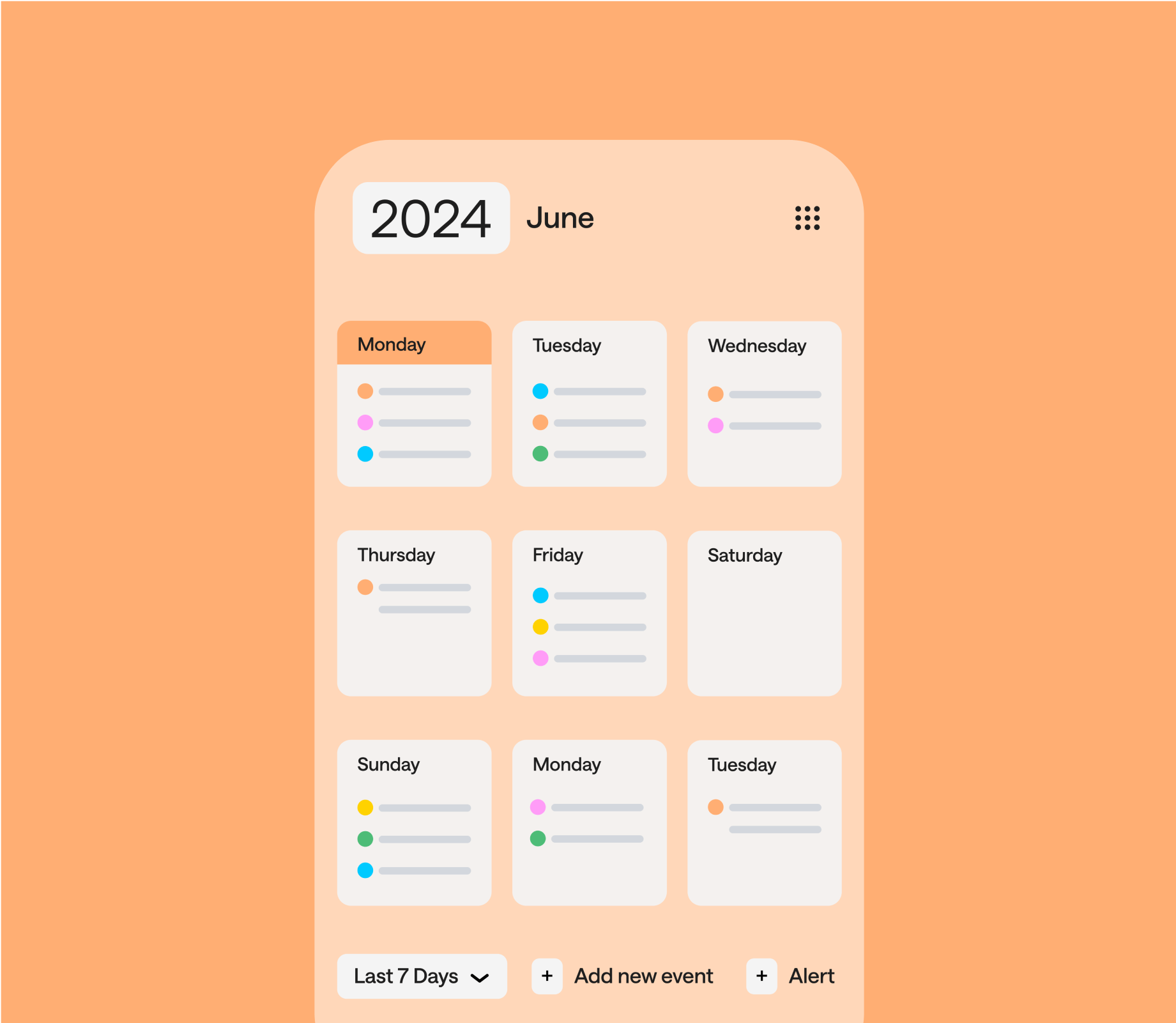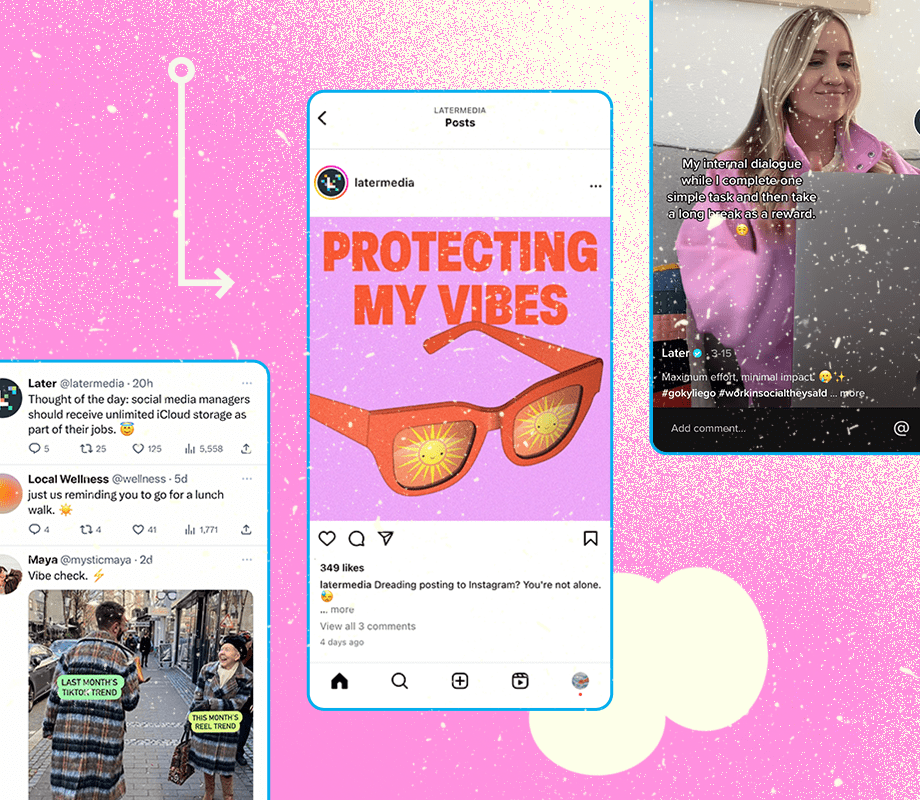The Different Types of Social Media Content
Let’s start with the simple stuff before we look more deeply into the strategy. Here’s a review of the different types of content you can use on social media:
Images and Photos
Some platforms are image-first, especially Pinterest and Instagram (although video features highly here too!).
Using high-quality images will capture attention quickly and can be used for product showcases, behind-the-scenes glimpses, and user-generated content to keep your feed visually appealing.
If you’re using images created with AI, make sure that you don’t have any rogue additions like people with extra arms or fingers; there’s still a way to go until AI images are hard to detect online.
Videos
Video content can be short and sweet, or detailed long-form. Both have their place on social media. Examples of short-form content are Instagram Reels, TikToks and YouTube Shorts.
YouTube also hosts longer-form videos which brands may embed into their websites too.
Stories
Stories on Instagram, Facebook, and TikTok offer a way to share short-lived, engaging content.
You can use stories for promotions, quick updates, and interactive content like polls and Q&A sessions to connect with your audience in real-time.
Live Streams
Live streams are another powerful tool for real-time engagement on YouTube, Instagram, TikTok and Facebook.
You could use a live stream for Q&As, product launches and behind-the-scenes events to create a sense of immediacy and connection with your audience.
Text Posts
Visual posts have started to become the norm, but don’t forget about well-crafted text posts.
This format gives you the chance to share tips, ask questions, or provide updates to engage your audience on platforms like LinkedIn, Facebook and Twitter/X.
You can also re-share text posts on Instagram as well to break up photo and Reel content.
Infographics
When done well, infographics are a great way to present information clearly and attractively.
They break down complex data into digestible, visual content that's easy to share, making them ideal for educational content and statistics.
User-Generated Content (UGC)
UGC is when your followers create content related to your brand; sharing this content builds community and trust.
You can share UGC to showcase how your products are used in real life and to get realistic reviews from your biggest fans, which is a good way to establish your social proof.
Polls and Surveys
Interactive content like polls and surveys on Twitter/X and Instagram Stories can boost engagement and will provide valuable insights into your audience’s preferences and opinions.





Social Media Content: Where to Begin
Now we know what type of posts are available, and where to share them, you’ll want to move on to the logistics of creating a social media content strategy. It may seem daunting, but breaking it down into manageable steps can help.
For more insights, you can see how we plan our social media content strategy at Later here.
Define Your Goals
Start by identifying what you want to achieve with your social media efforts. Are you looking to increase brand awareness, drive traffic to your website, or boost sales?
Setting clear, measurable goals will guide your strategy and ensure that your efforts are aligned with your overall business objectives.
Know Your Audience
Research your target audiences, such as the preferences, behaviors, and platforms they use the most.
This information will help you tailor your content to their interests and make sure that your messages resonate with the right people.
Choose the Right Platforms
Not all social platforms will be suitable for your brand. Focus on the ones that align with your goals and where your audience is most active.
This will help you maximize your resources and reach your audience more effectively.
Plan Your Content
A content calendar can help you to organize your posts. Mixing different types of content and planning for regular updates will keep your audience engaged, but it can get overwhelming if you don’t have a good system.
Hot tip: Use Later’s social media scheduler to streamline this process and ensure consistency.
Engage and Interact
Social media is not a one-way street.
You need to engage with your followers by responding to comments and messages, and participating in conversations. This builds community and loyalty, showing that you value your audience.
Analyze and Adjust
Regularly review your performance metrics to understand what’s working and what isn’t. Use these insights to refine your strategy over time.
Tools like Later Social provide comprehensive analytics to help you track your performance and make data-driven decisions.
For all the latest social media tea, make sure you follow Later's Newsletter for weekly updates on the world of social & our hottest strategy tips.